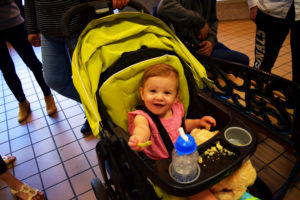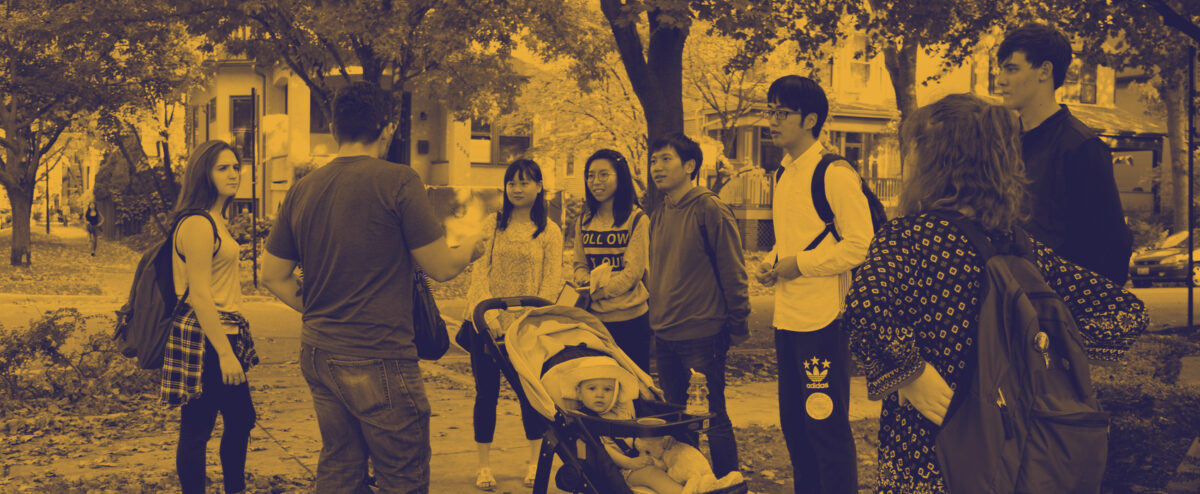In the autumn of 2016, I joined the University Center for Writing-based Learning. As a newly crowned Peer Tutor, I attended the annual All-Staff Orientation, participated in Associate Director Matthew Pearson’s Rhetorical Pedagogy course, and worked closely with my fellow tutors as I began the greatest campus job on the planet. Through the first half of the quarter, I met amazing writers, tutors, and educators. I got a great look at the inner workings of the Writing Center. However, the UCWbL’s other teams and programs—Writing Fellows, Workshops, Outreach, and so on—remained much a mystery to me.
So, I sent some emails, tracked down some team leaders, and with only a vague sense that what I was doing was allowed, I showed up at various team meetings, public programs, and special events with the goal to learn as much as I could about every facet of the UCWbL. Today, I’ll write about one team that particularly captured my interest, a team of which I am now a member. It’s called the Collaborative for Multilingual Writing & Research, and in this post I’ll recount my experience visiting the CMWR, the wonderful things which convinced me to sign up, and the opportunities I am most excited for as a fledgling team member.
Conversation & Culture
The First CMWR Event I attended was a Conversation and Culture meeting. On Fridays, CMWR members meet with students to read articles, watch videos, hold discussion, and eat snacks. Each week provides a different topic of discussion, running the gamut from lighthearted to serious; the week before my attendance, the theme was dessert—the session I attended, it was police brutality and racial injustice. Three team members served as facilitators for a crowd of around a dozen students, primarily native speakers of Chinese and Korean.
We read interviews with Black Lives Matter supporters, watched documentary footage on police misconduct, and examined racial diversity maps of the city. It was fascinating to hear the perspectives of the students, the comparisons that many drew to discrimination, violence, and power in their home countries, the ways in which American culture and American struggles appear to those who have not spent their lives inside them. It was a lot of fun, of course, but the biggest takeaway for me was realizing that difficult dialogue always exists and must always be engaged with. Difficult issues don’t wait around for you to complete a degree in Social Justice, and they certainly don’t reserve themselves for those with perfect knowledge of language and culture. After this meeting, I was starting to develop a clearer idea of what the CMWR was about and why the work they do is so important.
Walking & Talking
A short time after my Conversation and Culture experience, I tagged along with the CMWR to a Walk and Talk to Andersonville. In a Walk and Talk, tutors and students get out of the office to explore the many exciting neighborhoods that Chicago is host to. I met team leader Mark and his adorable daughter, Zia, off the Berwyn stop. Soon, the team and several Chinese ELA students arrived on the red line. We walked west through the residential streets of Andersonville, flanked by quiet houses and dappled in sunlight filtered through green leaves (both of which existed pre-winter). On the corner of Clark and Berwyn, Mark explained the history of Andersonville and its Swedish roots. We walked south to the Swedish American Museum on Foster, and stopped for a lunch of breads, cookies, and pastries at the Swedish Bakery near Balmoral.
I tagged along with the CMWR to a Walk and Talk to Andersonville. In a Walk and Talk, tutors and students get out of the office to explore the many exciting neighborhoods that Chicago is host to. I met team leader Mark and his adorable daughter, Zia, off the Berwyn stop. Soon, the team and several Chinese ELA students arrived on the red line. We walked west through the residential streets of Andersonville, flanked by quiet houses and dappled in sunlight filtered through green leaves (both of which existed pre-winter). On the corner of Clark and Berwyn, Mark explained the history of Andersonville and its Swedish roots. We walked south to the Swedish American Museum on Foster, and stopped for a lunch of breads, cookies, and pastries at the Swedish Bakery near Balmoral.
Aside from the wonderful weather and the lesson on Chicago history, I had a great time talking to the Chinese students, who had been stateside for short of three months at that point, about their time at DePaul, the things they loved about Chicago, and the things they missed about their hometowns. I learned about the wildlife and topography of the provinces they hailed from. One especially charismatic student schooled me on the right (read spicy) way to eat Hot Pot. Over the course of the afternoon, we discussed fitting in in Chicago, preparing for winter, and finding things to do on a student budget. I remembered my own five-hundred mile move to college, and it occurred to me how hard it must be to move across the globe to an unfamiliar country. To create a network of support which would welcome and assist these students struck me as one of the CMWR’s most admirable goals.
The Quarterly Potluck
T he final event I attended last fall was the quarterly International Potluck. This end-of-term party brings students from a variety of backgrounds together in an empty Lewis Center classroom for food, fun, and games. We sampled cuisine from around the globe and watched highlights from the Fresh Prince of Bel-air. A student from India and my fellow tutors shared tattoo stories, the cultural acceptance of ink, and how to best conceal one’s artwork in the event of job interviews and court appearances. We played a riveting game of Apples to Apples and listened to Echo and the Bunnymen. I’m not sure if I learned as many lessons on cultural acceptance and the importance of multilingual discussion this time around, but it sure was a whole lot of fun.
he final event I attended last fall was the quarterly International Potluck. This end-of-term party brings students from a variety of backgrounds together in an empty Lewis Center classroom for food, fun, and games. We sampled cuisine from around the globe and watched highlights from the Fresh Prince of Bel-air. A student from India and my fellow tutors shared tattoo stories, the cultural acceptance of ink, and how to best conceal one’s artwork in the event of job interviews and court appearances. We played a riveting game of Apples to Apples and listened to Echo and the Bunnymen. I’m not sure if I learned as many lessons on cultural acceptance and the importance of multilingual discussion this time around, but it sure was a whole lot of fun.
And that brings us to now. I’m a new CMWR member, and I couldn’t be more excited to start my work on this amazing team. I’m definitely looking forward to our next Walk and Talks to the French Market and the Garfield Park Conservatory. I’m especially thrilled to be co-facilitating our brand new Craft Days, in which fellow tutor Kylie A. and I will guide students in creative activities that will promote introspection and communication. Overall, I can’t wait to jump into all of the work we at the CMWR do to promote diversity, cultural awareness, and multilingual discussion.



One reply on “Why I Chose the CMWR (And How You Can, Too)”
wow good job evan